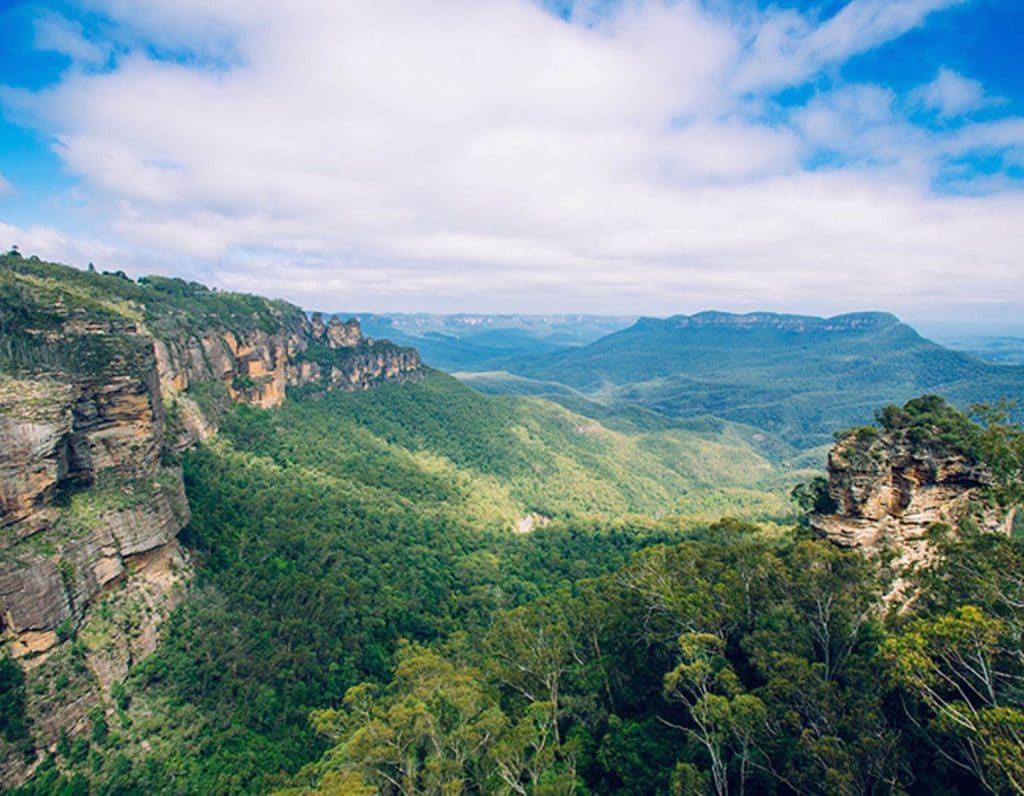Why Are Blue Mountains So Prominent?
The Blue Mountains Unveiled: A Closer Look at Their Prominence
Blue Mountains Prominence

Nestled within the heart of Australia’s New South Wales lies a natural wonder that has enthralled travelers and. Nature enthusiasts for centuries – the Blue Mountains. Renowned for their dramatic cliffs, lush forests, and the enchanting blue haze that blankets the valleys. The Blue Mountains are more than just a stunning backdrop. They are a testament to the incredible geological processes and environmental factors that have shaped this prominent and captivating landscape. In this blog post, we embark on a journey to unravel the mysteries of why. The Blue Mountains are so prominent and explore the geological, and environmental. And historical factors that have contributed to their prominence.
Geological Origins
The foundation of the Blue Mountains’ prominence lies deep within the Earth’s crust. Where geological processes spanning millions of years have played a pivotal role in their formation.
Hawkesbury Sandstone
Dominant Rock Formation:
The Blue Mountains are predominantly composed of Hawkesbury sandstone. A type of sedimentary rock formed from the accumulation of sand grains over millions of years. This sandstone, characterized by its reddish-brown hue, is highly resistant to erosion.
Uplift and Erosion
Tectonic Forces:
The dramatic uplift of the Blue Mountains began around 50 million years ago as a result of tectonic forces. Caused by the collision of the Australian Plate and the Pacific Plate. This uplifting process continues, albeit at a slow pace, contributing to the mountains’ prominence.
Erosional Processes:
Over millions of years, the Blue Mountains have been shaped by erosional forces, including wind, rain, and river activity. These processes have sculpted the cliffs, plateaus, and valleys, giving rise to the distinctive landscape.
Blue Haze Phenomenon
One of the most captivating features of the Blue Mountains is the bluish haze that often envelops the region. This phenomenon, known as “Mie scattering,” is a result of the scattering. Of sunlight by tiny particles released from eucalyptus trees. The essential oils released by these trees create the bluish haze. Enhancing the scenic beauty of the mountains and adding to their prominence.
Unique Flora and Fauna
The Blue Mountains are home to a remarkable array of flora and fauna. Including many species found nowhere else on Earth. The biodiversity of the region has contributed to its ecological prominence.
Eucalyptus Forests
Eucalyptus Diversity:
The Blue Mountains are renowned for their diverse eucalyptus forests. Which are essential for the survival of many native species. Eucalyptus trees play a vital role in the blue haze phenomenon and support a variety of wildlife.
Endangered Species
Wollemi Pine:
The Wollemi Pine, a living fossil dating back to the time of the dinosaurs. Was discovered in a remote part of the Blue Mountains. Its existence in the region adds to the ecological prominence of the area.
Cultural and Historical Significance
The Blue Mountains hold immense cultural and historical significance for indigenous communities and early European settlers, further enhancing their prominence.
Indigenous Heritage
Dreamtime Stories:
Indigenous communities, such as the Gundungurra and Darug, have deep connections to the Blue Mountains. Dreamtime stories and traditional practices are intertwined with the landscape, contributing to its cultural prominence.
Early European Exploration
Exploration and Settlement:
European explorers, including Gregory Blaxland, William Lawson, and William Wentworth. Crossed the Blue Mountains in 1813, opening up new lands for settlement. The crossing of the mountains was a historic event that added to the region’s historical prominence.
Tourism and Conservation Efforts
Popularity as a tourist attraction and continuing conservation initiatives have further increased the Blue Mountains’ stature.
Tourism Appeal
Visitor Attractions:
Tourists from around the world are drawn to the Blue Mountains to witness their breathtaking scenery explore. Hiking trails visit iconic landmarks such as the Three Sisters. And immerse themselves in the natural beauty of the region.
Artistic Inspiration:
The Blue Mountains have been a muse for artists, writers, and photographers. Further cementing their prominence in the cultural and artistic sphere.
Conservation Initiatives
World Heritage Listing:
In 2000, the Greater Blue Mountains Area was designated a UNESCO World Heritage Site recognizing. Its outstanding natural values and cultural significance. Conservation efforts are ongoing to protect the region’s unique ecosystems.
Conclusion
The prominence of the Blue Mountains is a multi-faceted phenomenon, shaped by geological processes. Environmental factors, cultural significance, and the enduring appeal of their stunning landscapes. From the ancient sandstone cliffs to the bluish haze that bathes the valleys. Each element contributes to the allure of this natural wonder. As we stand in awe of the Blue Mountains today. We are reminded of the intricate interplay of nature, history. And culture that has elevated these peaks to their prominent status in the world of natural wonders. The Blue Mountains beckon us to explore, appreciate. And protect the remarkable heritage that has graced this region for millions of years.




